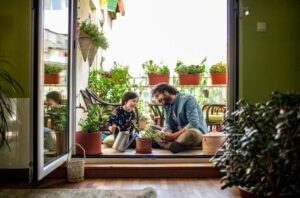
Continuity in the rental market means rising rents
In April, asking rents increased by 0,3 points, or 0,2%, on a national average. This means that continuity in the rental market continues to mean

In April, asking rents increased by 0,3 points, or 0,2%, on a national average. This means that continuity in the rental market continues to mean

In Urs Scheuber, SMG Real Estate has gained a proven sales and industry expert to lead the sales division. He will assume the role of

While the first two months of the year saw little movement in asking rents, March has already been significantly more dynamic. Cantons with positive and

Anyone looking for a condominium in 2024 encountered a significantly larger supply than the previous year. Almost 100,000 properties were advertised across Switzerland – around

Homeowners raised their asking prices in March: Both single-family homes and condominiums recorded significant increases compared to the previous month. In periods of economic uncertainty

Asking prices for single-family homes fell slightly in February, but anyone wanting to buy a condominium was confronted with rising prices. The trend towards a

An extraordinary number of property owners had to contend with natural disasters in 2024. According to Munich Re, the damage caused worldwide reached a record

At the start of 2025, asking rents moved only slightly. There were no major fluctuations compared to the previous month, while asking rents rose again

The start of the year brings good news for home-seekers: Both single-family homes and condominiums were advertised at lower prices than the previous month. However,

The imbalance between supply and demand in the Swiss housing market made it inevitable that supply prices would continue to rise in 2024. However, this
Head of Design for Automotive
Introduce yourself and your role at SMG
I’m Marta Andreoni, Head of Design at SMG Automotive. I lead the design and UX writing team shaping AutoScout24 user experience.
In my role, I wear many hats. My main focus is ensuring we stay true to our vision “simplifying people’s lives and connecting humans through innovative digital platforms” and our brand promise, “make it happen”. I challenge my team to think user-first, push for innovation, ease of use for our customers and make forward-thinking decisions, even within business and technological constraints.
A big part of my role is supporting each designer’s growth, motivation, and career development. Through one-on-one coaching, mentoring, group work, and projects, I help my colleagues set and achieve their goals while fostering new learning opportunities.
What helps you feel empowered and confident in your role?
If I had to mention one thing I would say “being proactive” has been key to feeling more empowered. I enjoy solving problems, so when issues or opportunities arise, be it in the product, market or the team, I get curious and I proactively investigate the reasons and try to bring inputs to be discussed with others, this makes me feel I can be part of the process or solution and my point of view is going to be taken seriously. My optimism also plays a role, giving me confidence that even the most complex challenges can be solved.
Besides, having trust from other managers and colleagues makes me feel in a safe environment where I can take ownership on topics I’m passionate about.
What’s one thing SMG does well in fostering an inclusive workplace? What more can be done to amplify and support different perspectives in the workplace?
In my experience, we strive for balancing top-down and bottom-up inputs, ensuring employees can influence product directions, processes, and culture. People are approachable, and our strong feedback culture helps voices be heard. Across SMG, initiatives like regular People & Culture Surveys, topic guilds, and events in our locations across the world foster open exchange and mutual learning.
That said, I’ve noticed that quieter voices sometimes get less space, or interacting with top management can feel intimidating, especially when giving critical feedback. To make participation more inclusive, we could apply more facilitation and group work techniques like structured turn-taking, written input, and smaller group discussions – ensuring everyone, regardless of confidence level, seniority or personality, feels comfortable contributing.
Design is often about seeing the world differently. How do unique perspectives contribute to more innovative, inclusive, or impactful design?
Design is about understanding diverse user personas and perspectives to create solutions that truly meet their needs or create new opportunities. I believe in the power of collaboration to shape user experiences – bringing together different disciplines, backgrounds, and lived experiences helps challenge assumptions, uncover blind spots, and drive more inclusive, innovative, and impactful solutions.
Looking back on your career, what’s one lesson or piece of advice you wish you had known earlier as a leader in design?
There are three things no one really prepares you for as a design leader: dealing with constant change, facing failure and handling emotions at work. These topics aren’t talked about much until you face them. I was lucky to learn from others’ experiences, but much of it came through my own.
One thing I wish I had understood earlier is the power of emotional intelligence, my job is no longer about the content and the design, it is about people. Self-awareness, not just of your own emotions, but also how others feel and react, can be the difference between conflict and harmony, frustration and clarity. The more I grow as a leader and designer, the more I realise that design isn’t just about doing the design job, delivering solutions on the market: it’s about navigating people, their emotions, and making change more acceptable and transforming issues into opportunities, both within the organisation and through great products.